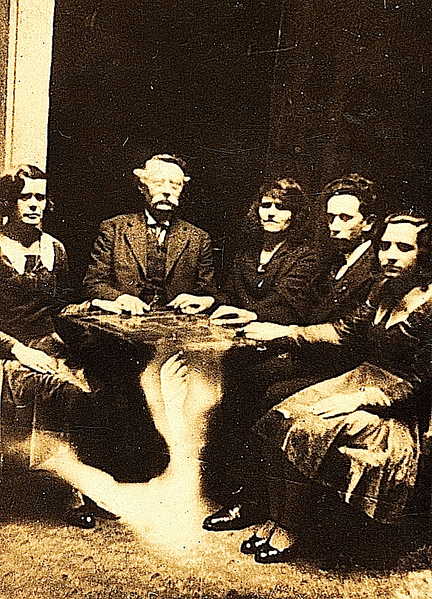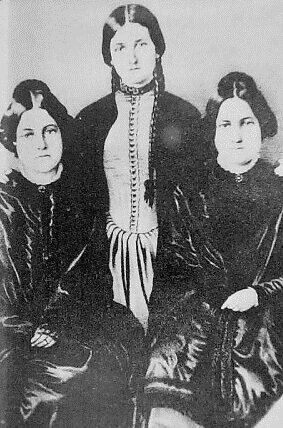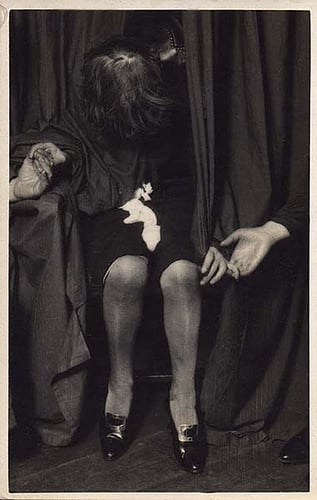The Séance - History and Origins
1920s seance

A dark room, a mysterious woman; floating objects; knocking sounds; an unworldly voice. This is a séance, where a mysterious medium attempts to contact, or at least pretend to contact, the dead so that they may communicate with the living they have left behind.
Séance, the word that has become associated with communicating with the dead, has its roots in a far less provocative meaning. In French, the word séance originally meant a seated meeting of any type. Eventually, however, both in French and English the word became associated specifically as a means to communicate with the dead in another, unearthly world. It is, in effect, the close-up examination of, and communication with, the spiritual world.
The séance is usually held in a darkened room by a medium who is the person, usually a woman, who actually contacts the spirits. The séance may produce a variety of alleged spiritual activity, including strange noises, moving objects, eerie music, ectoplasm and even the appearance of a spirit.
The Fox Sisters

Literary references to, and discussions of, spiritualism can be found throughout Europe in writings from the 18th century. But it’s believed that modern spiritualism and the practice of the séance began around 1848 when two sisters - Kate and Margaret Fox – became frightened by mysterious knocking sounds in their Hydesville, New York home. During one particularly noisy session, Kate asked the unknown source of the rapping to knock the same number of time as she snapped her fingers. She snapped, and the invisible visitor responded correctly. Over a number of sessions this developed into a yes-or-no experiment and ultimately, using an alphabet knocking system, the girls learned that they were conversing with a man that had been murdered in the house.
Soon residents of the town were coming to witness this phenomenon and the legend of the girls’ ability to create spiritual contact was firmly established. Later, the girls moved to live with Quaker friends in Rochester and their reputation spread quickly throughout that religious group. They soon became famous and held séances in New York in 1850 that attracted such notables as James Fennimore Cooper and Horace Greeley. Despite the girls’ later admission that the knocking events had been staged, a good portion of the country remained convinced that skilled mediums could indeed communicate with the dead.
Ectoplasm during a seance

Beginning in the mid-1850s, after the time of the Fox sisters, the séance was often held in a room that contained a “spirit cabinet”. These cabinets could either be actual pieces of furniture or a corner of the room that was simply separated by a curtain. This was the medium’s work space and it was said to be used to attract the spiritual forces. The mediums were often tied and bound before being placed in the cabinet, adding the illusion of a magic trick to the session.
The popularity of spiritualism and the séance continued in the United States and throughout Europe until early in the 20th century. After her son Willie’s death in 1862, Mary Todd Lincoln is even said to have held séances in the White House in an effort to reach him. And while some mediums seek to achieve larger financial success by conducting a séance while standing alone before an audience, the traditional séance has always been conducted around a circular table.
Perhaps the most famous medium in the early 1900s was a woman from Boston by the name of Mina Crandon, more commonly known as Margery. One evening in 1923, Margery’s husband invited a group of friends to his house for a séance. Although Margery had no personal interest in the spiritual world at the time, she too joined in the exercise. Soon the table around which the group sat began to move in response to questions. In order to determine exactly who around the table was in contact with the spirit each of the participants began to leave the room, one by one. The table continued to move until it was Margery’s turn to leave – when the movement suddenly stopped.
Margery soon became well known for her claimed spiritual connections at a time when the popularity of the craft was in decline due to the question of fraud involved in the activities of many supposed mediums. Much of her particular popularity was, no doubt, due to the allure of some of her rather unconventional and risqué habits, such as sometimes performing her séances in the nude and having affairs with some of her loudest critics.
During the time of her popularity, the respected magazine "Scientific American" offered a prize of $2,500 to anyone that could convince a panel of respected experts that there was no trickery involved in their séance sessions. One of the experts on that panel was none other than Harry Houdini, the renowned magician. After a series of tests and investigations the panel was convinced of Margery’s talent and prepared to award the prize money to her. But Houdini protested loudly and insisted on further, more stringent tests before any award was considered.
In one of those investigations, Margery was placed in a wooden box with a hole for her head and one for each arm so that other members of the séance could hold her hands, thereby preventing her from any trickery. It’s said that her spirit contact then became so angry at Houdini’s skepticism that the lid of the box was suddenly ripped off. When the test resumed, Margery was told to have the spirit ring a bell that had been placed inside the box. After a period of silence, the spirit, through Margery, claimed that Houdini must have done something to the bell to prevent it from ringing. The box was opened and the investigators found that a piece of rubber had indeed been wedged in the bell to prevent it from ringing. Houdini, of course, denied the charge that he had been responsible for the interference. Other tests were later performed, but no unanimous decision could be reached and the prize money was never awarded.
Of course skeptics will always claim that the séance is nothing but a magic show with the same old tricks being used to create the illusion that objects move or float through the air and that sound or music can come from inanimate objects. But whether you believe in the supernatural or not, experiencing a well-choreographed séance can be a delightful, and often intriguing, way to spend an evening.
This hub brought to you...
by Julie-Ann Amos, professional writer, twitter ghostwriter and owner of international writing agency www.ExquisiteWriting.com
Why not create your own HubPages? It's fun and you can make revenue from Adsense and other revenue streams on your pages. JOIN HUBPAGES NOW - SIMPLY CLICK HERE... (or contact me to write one for you!)
This work is licensed under the Creative Commons Attribution-Non-Commercial-No Derivative Works 3.0 Unported License. To view a copy of this licence, visit http://creativecommons.org/licenses/by-nc-nd/3.0/ or send a letter to CreativeCommons, 171 Second Street, Suite 300, San Francisco, California94105, USA.









